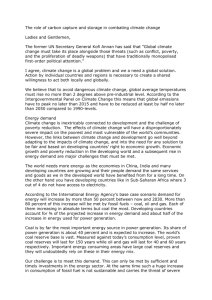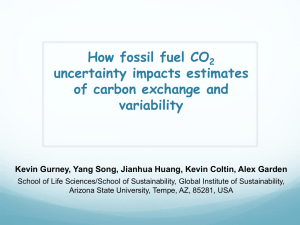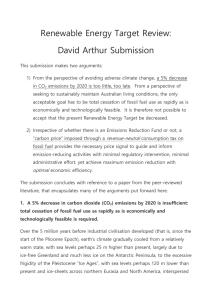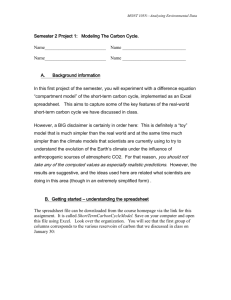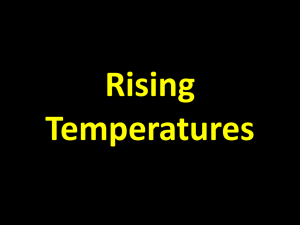Does Renewable Energy Reduce Greenhouse Gases: The Case of
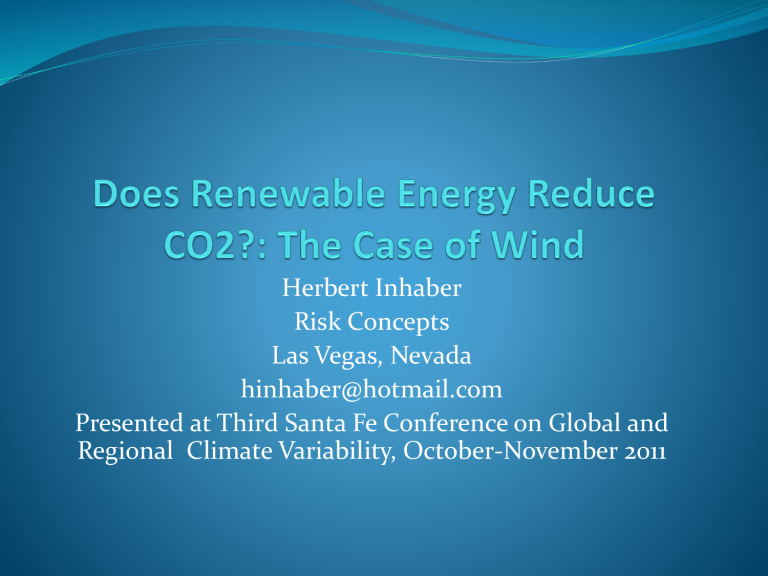
Herbert Inhaber
Risk Concepts
Las Vegas, Nevada hinhaber@hotmail.com
Presented at Third Santa Fe Conference on Global and
Regional Climate Variability, October-November 2011
What is seen and not seen (after
Bastiat, French economist)
Windmills – seen
Backup fossil fuel plants when wind doesn’t blow unseen
CO
2
Reductions with Intermittent (Variable)
Energy Sources: How Much?
CO2 reduction is almost one-for-one for small number of windmills or solar collectors
BUT....
What Happens when Fossil Fuel
Backup is Turned on and Off?
An analogy: 2011 Toyota
Camry mileage over highway and city (33 highway, 22 city)
Highway miles per gallon is always higher than city mpg
Stops and starts reduce efficiency, create greater pollution per mile driven
Another Analogy
• Very few people have seen gas turbines turned on and off
• However, starting a lawn mower is similar to that action
• Even when the mover is later re-started, there is considerable pollution emitted, although perhaps less of a cloud
In the same way, fossil fuel backup starts and stops create more CO2 than continuous operation
In some regions (e.g., Germany), there is so-called
“feed-in” requirements
When windpower is generated, fossil fuel backups are turned off or down
This frequent cycling produces more CO2 than continuous operation
Thus CO2 savings from windpower is greatly reduced
But won’t windpower average out; i.e., when wind stops in one area, it will blow in another region
Windpower production in the E.On Netz system,
2004
This covers much of
Germany, from Bavaria in the south to the
German Bight in the north
There is very little averaging
Will storage solve the frequent starts and stops of windpower backup?
Picture is of pumped storage in S. Carolina
There are 17 such systems in the U.S.
In principal, this type of storage could even out wind variability
But these systems are tiny in comparison to electricity demand
Storage to solve windpower problems – continued
Chemical storage (molten salts) has been tried since 1974 (Univ. of Delaware)
Cost on large scale would be prohibitive
Lead-acid battery is still the cheapest (after 130 years) per unit energy stored – invented by Planté in France
Again, large-scale cost would be enormous.
Example: Cost of lithium batteries in a recent electric car is $18,000 – they store about $1.50 worth of electricity
Nissan
Leaf
$18,000 worth of batteries holding about
$1.50 of electric energy
Results – cycling of backup substantially reduces CO2 saved
Data collected from around the world
Bentek (2010)–
Colorado
Bentek (2010) –
Texas
German study –
2005
Ireland - 2004
Results - continued
Estonia – 2007
De Groot and Le Pair – “it is necessary to establish on the basis of data, rather than model predictions, the level of extra fuel...”
U.S. National Academy of Sciences: “the committee estimates that wind energy... [p]robably will contribute to offsets of approximately 4.5% in U.S. emissions of
CO2...”
Conclusions
Results have strong implications for plans to reduce
CO2 emissions by deploying windpower
Results are applicable to other intermittent renewables such as solar photovoltaic and solar thermal
The only renewables exempt from this limitation of
CO2 emission are hydroelectricity and geothermal, which have self-storage of energy
Results place in question President Obama’s goal of about 80% of American electricity supplied by renewables by 2035, presumably to reduce CO2 emissions substantially.
Uncertainties
Type of fossil fuels
Some literature is polemic
Degree of intermittency
Open or closed cycle gas turbines
Some utilities don’t supply data
Types of fossil fuels used as back-up
How variable is the wind
Export of wind energy (Denmark)
Many others
Action Plan to Reduce Uncertainties
In principle, regulatory agencies (public utility commissions [PUCs] in the U.S.) and electrical utilities should gather and analyze data on the “missing” CO2 reductions
They generally do not do so because any expenditures on wind and other renewables are passed on to the consumer. Both PUCs and utilities state they are reducing CO2 emissions, but do not calculate how much
Consumers should know what reduction of CO2 they are getting for their increased costs
Summary
The story of the tea bag label



